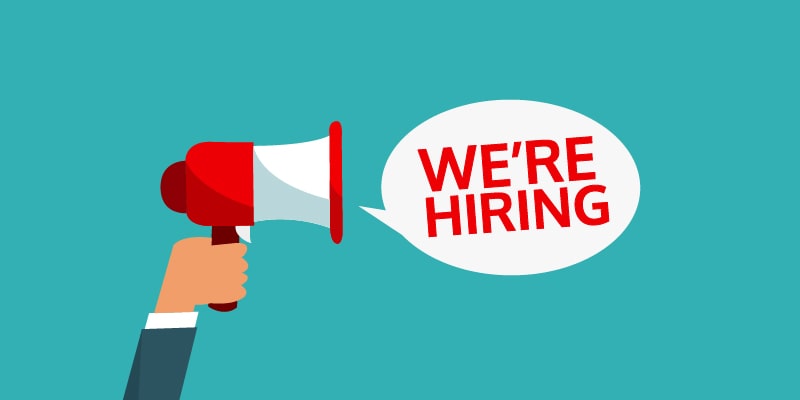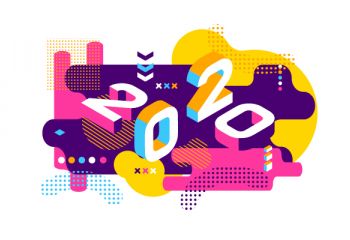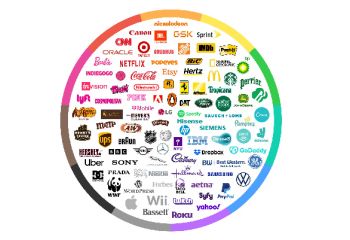
Viv Harries is the Founder of Vivi Creative. He works with businesses to give them the creative edge with unique designs and a solid brand identity.
recent posts
- What Is Branding? A Guide for Business Owners in 2025
- Thinking About Rebranding Your Business in Wales? Here’s What You Need to Know
- How to Build a Brand That Connects Emotionally with Your Audience
- How to Build a Website That Actually Converts Visitors into Customers
- The Ultimate Guide to Branding for Welsh Businesses in 2025

How to Hire a WordPress Designer
The following article was contributed by the team at Toptal.com, a platform that connects designers and organisations.
WordPress is a free open-source tool and content management system (CMS) that enables the creation of websites, a WordPress blog, and more. It’s a software designed for everyone, emphasising performance, security, and ease of use.
The WordPress platform has come a long way since its launch in 2003. Available in more than 70 languages, WordPress is flexible, highly customisable, and has powerful website-building features. However, it still mostly relies on the use of templates, what they call “themes.” If a business needs more than WordPress templates, it is highly recommended they hire an experienced WordPress designer.
WordPress is not just for website design or blogs, however. WordPress also offers a full range of eCommerce options, from one‑click payments to paid subscriptions. That said, the complexity of creating a fully customised, sophisticated online store absolutely necessitates not only hiring a WordPress developer but also an experienced WordPress designer.
What Is a WordPress Designer?
A WordPress designer is someone who understands the software and the WordPress ecosystem and is familiar with its features, functionalities, and capabilities. WordPress websites are organised around “themes,” and the platform offers a multitude of plugins and widgets for extensive customisation. An expert WordPress designer would know how to work with the WordPress platform to create an eCommerce store by using plugins such as WooCommerce or Easy Digital Downloads.
Because there are so many WordPress designers out there, finding the right one depends on your project’s particular needs. To be clear, this hiring guide is for hiring a WordPress expert designer which is different from hiring WordPress developers for plugin development or theme development.
What to Look for When Hiring a WordPress Designer
Anyone without any specialised programming knowledge can build a website, but a working knowledge of WordPress intricacies, such as theme development, using plugins, and optimising for SEO is a big advantage for a designer. An expert WordPress designer should have mastery of the themes and plugins that are proven to work well, in-depth knowledge of the platform’s capabilities, and be familiar with what types of projects would most benefit from its use.
Beyond having a sophisticated design aesthetic (proficiency in UI/UX design, colour schemes, typography, layout, visual design, and more), a great WordPress designer should also be familiar with the capabilities of its underlying technologies, such as HTML5, CSS3, JavaScript, PHP, and jQuery, and how they work together to power WordPress websites. If needed, they can help you hire a WordPress developer as well to assist with more intricate coding requirements.
Understanding the entire web development process, including design, development, and deployment, is a definite requirement, as is having experience with responsive and adaptive WordPress website design. The right candidate should have a sound understanding of design and development trends as well as content management systems.
The popularity of WordPress—especially among non-programmers—also makes it a target for cybercriminals, so it’s best to look for a WordPress website designer with expert knowledge of security best practices. For example, cybercriminals often distribute for free visually attractive WordPress themes that contain malicious scripts that steal site traffic or people’s personal and payment data.
A seasoned WordPress website designer can elevate a project beyond what a WordPress developer alone could do. They should be able to take a company’s brand and business requirements and build a WordPress website that matches its goals. That said, it’s a good idea to ask for examples of previous projects to see what each candidate has worked on. This will ensure that the type of work the designer has done in the past matches the project’s requirements. All candidates tend to have their unique strengths and weaknesses, so they’re likely to keep within their comfort zones when applying for projects.
WordPress Designer Interview Questions
The following interview question examples should help you with the interview process when hiring a WordPress designer. We hope you find these questions and answers a useful foundation as you search for a great candidate among the few expert WordPress website designers. Taking the time to find candidates well-versed with the platform, using plugins, and customising themes is well worth the effort. They will certainly have a significant, positive impact on your WordPress project and take it successfully across the finish line.
What kinds of projects can be built with WordPress?
An expert WordPress designer should be able to demonstrate familiarity with the WordPress platform. WordPress plugin development and the types of projects for which it’s most suited. Listen for in-depth knowledge and examples. It’s also important to be familiar with how to hire WordPress developers and the kinds of projects for which WordPress is not well suited.
What are WordPress themes, plugins, and widgets?
This question tests familiarity with the basic WordPress framework. A WordPress theme defines the design of a website, including its layout. Changing a theme changes how a site looks, i.e., what people see when browsing your website. Though many WordPress sites use custom themes, there are thousands of free WordPress themes available.
WordPress plugins are PHP scripts that extend the functionality of WordPress. They enhance the features of WordPress or add entirely new features to a site. Plugins are typically free to the public and are available via the WordPress Plugin Directory. Even though plugins are extensively tested and considered safe, one must be careful because they can be of varying quality.
WordPress widgets add content and features to sidebars, which can appear on the left or right side of sites. Plugins will often have their unique widgets, but good examples are the default widgets that come with WordPress, such as Categories, Tag Cloud, Search, and more. As opposed to WordPress plugin development, widgets require no expertise to code. They can be added, removed, and rearranged on the WordPress Administration Screens.
Can you tell me about WordPress theme customisation and what methods you would use?
Every WordPress site requires a theme; it’s integral to its structure and, therefore, an essential part of a website. Themes are like templates, and they can be easily customised. Using various methods, expert WordPress designers can adjust their layout, colours, headers, menus, widgets, and fonts.
In addition, WordPress plugins can be used, which makes it possible to customise a variety of functionalities. Plugins can also be used to manage code snippets that can be added to the code block of the HTML file or the functions.php file of the theme.
WordPress projects are further customisable by going directly into the underlying code. If they have the skills to do so, code editing gives designers precise control over how a site looks or functions. They can use the new block editor or the classic editor to edit HTML code for individual pages or posts.
Discuss different ways of installing plugins into a theme and explain one of the ways of doing it.
If using WordPress.com, plugins cannot be installed unless the site is on the “business plan.” WordPress plugins can be integrated in many ways, such as through:
- Actions and filters
- Shortcodes
- Widgets
- A PHP function
One of the simplest ways to install a WordPress plugin is to do it from the site administration dashboard. Under Plugins > Add New, one can search for a plugin, install it, and activate it. There are other ways, and an expert WordPress designer should be able to give you a clear explanation of the method they’d prefer to use.
Is it a good idea to install a lot of WordPress plugins?
WordPress has many plugins, but it’s not a good idea to install too many. The more plugins installed, the “bulkier” the site and the slower the loading times, so it’s best not to use plugins unless absolutely necessary.
If you must use many plugins, make sure you have a Plugin Organiser installed to manage them. This plugin lets you specify what plugins are activated on which pages, and the selective loading will significantly speed up the site.
You can also use P3 (Plugin Performance Profiler), a tool to see which plugins are taking up most of your resources.
How do I use Google Analytics with WordPress?
An expert WordPress designer should know there are many different ways to set up Google Analytics in WordPress, so listen for experience in this area. There are at least three different methods, and a great WordPress designer would help you choose the one that best suits your needs.
One of the easiest ones to use is MonsterInsights, a popular Google Analytics plugin for WordPress. It has a free and a premium version. More than 1 million websites use it, including Bloomberg and Zillow.
A more complicated way is to install Google Analytics in a WordPress theme. This method is only for advanced users familiar with coding, as it involves adding code in the header.php file.
Is WordPress.com more secure than WordPress.org? Why?
Because themes are limited on WordPress.com and installing plugins is generally not allowed, WordPress.com is considered more secure than WordPress.org.
Rounding Up the Requirements and Getting Started
At this point, you will have defined your WordPress project needs, identified a strong WordPress designer candidate, and you’re ready to move ahead with your project. The next and final step is to recap and address the following:
- Project scope and deliverables (expected/required)
- Timelines and goals
- Assumptions (e.g., responsive design, accessibility requirements, etc.)
- Special project requirements (e.g., language, etc.)
- Tech and specifications (responsive design, REST API, etc.)
- Legal (NDAs, other contracts)
Thanks for reading.
You can read about other website options available to businesses here.


